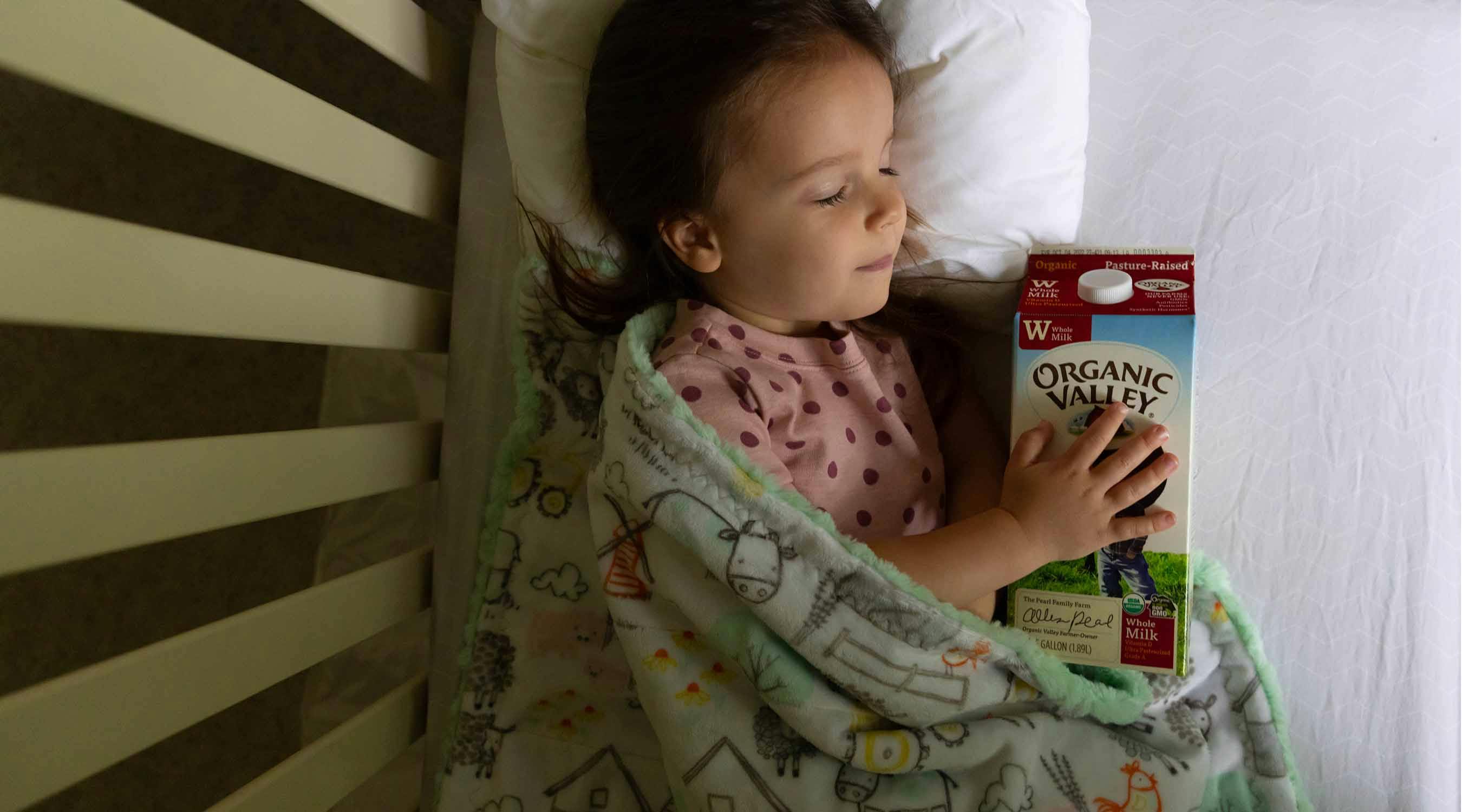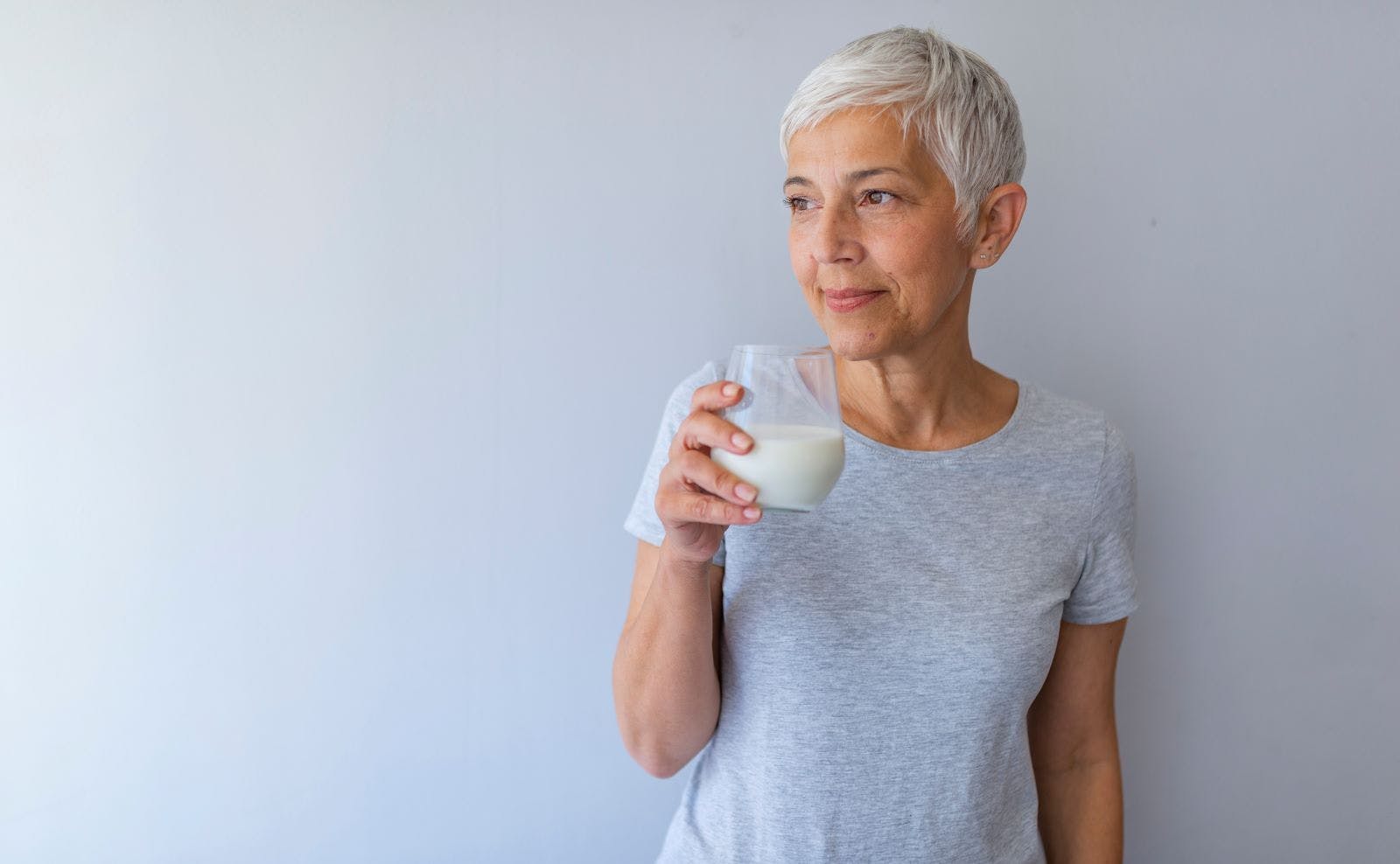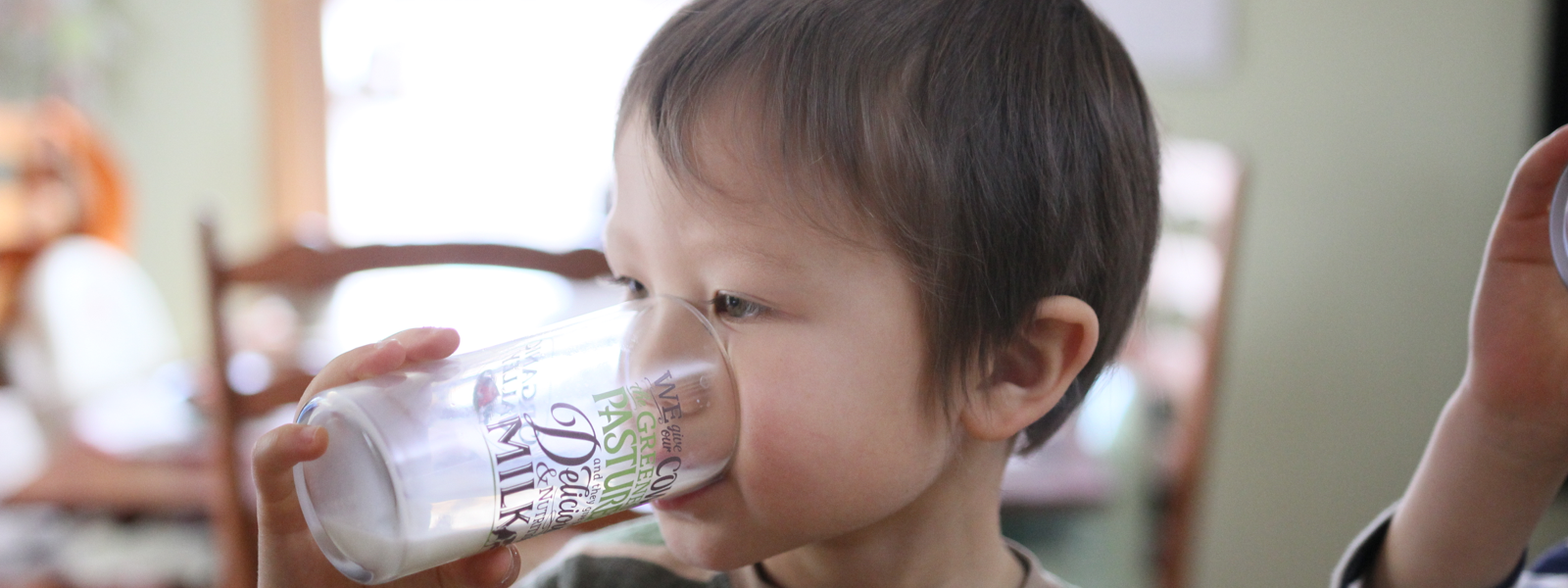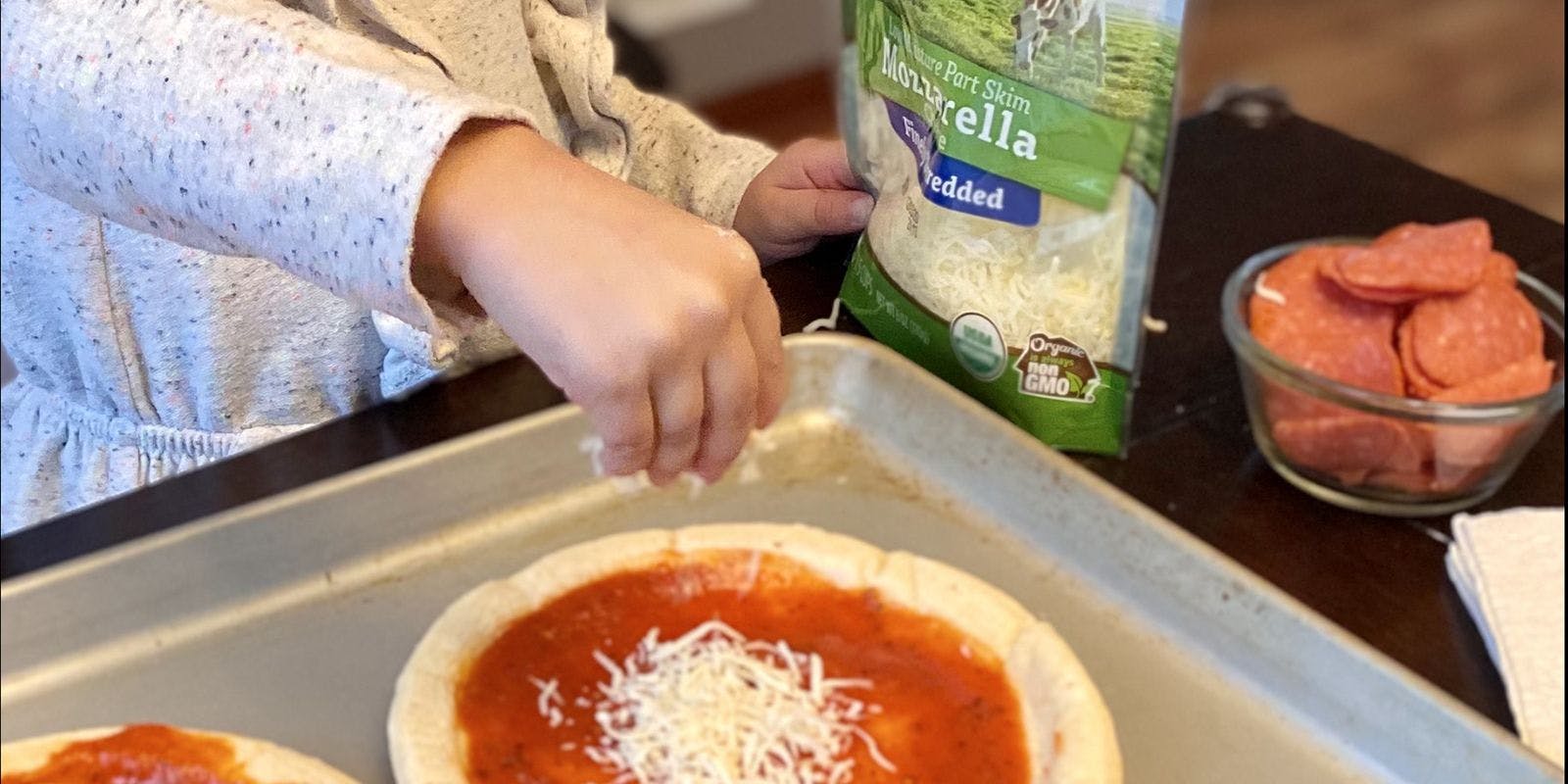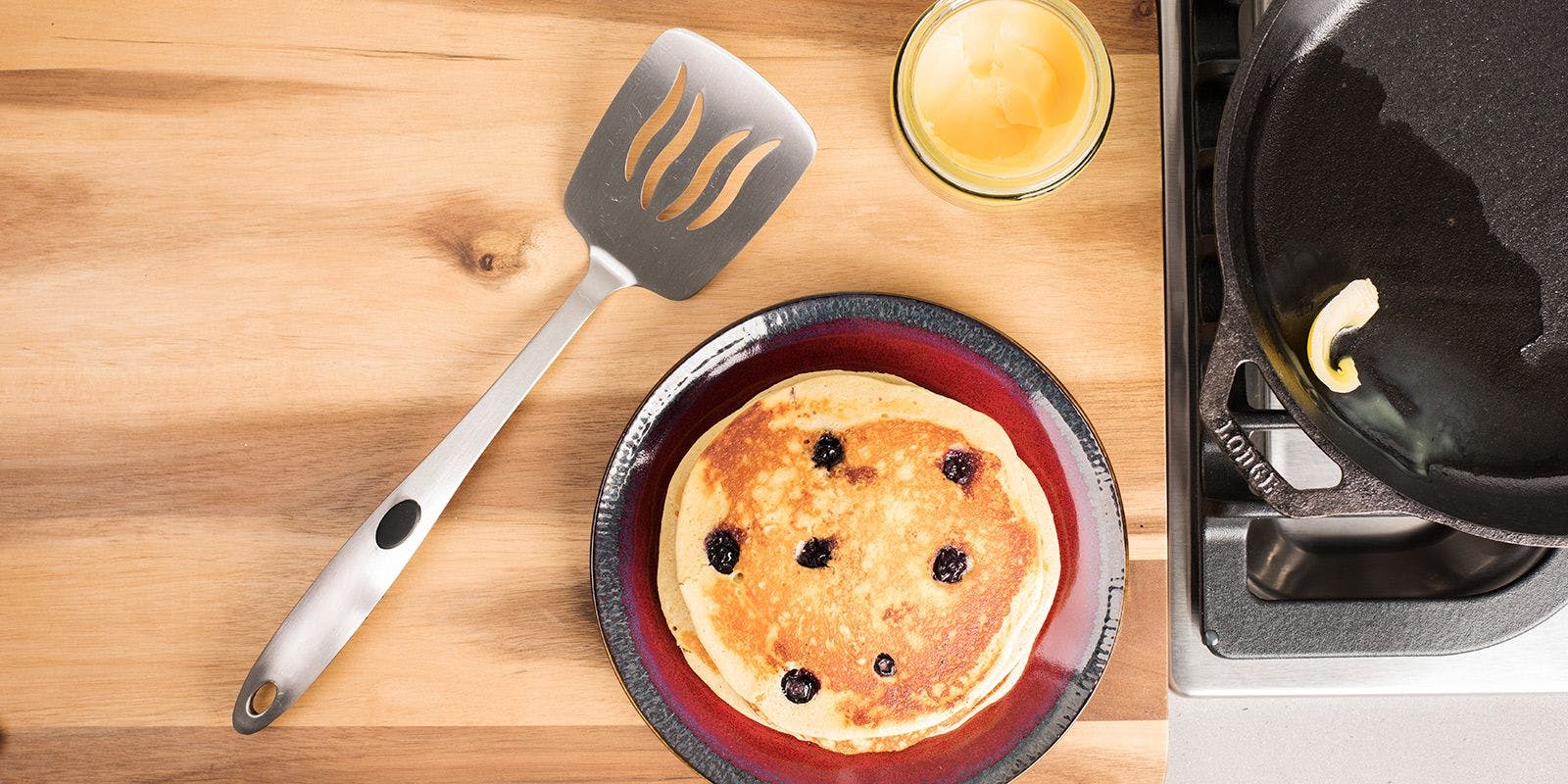
Food
When Can My Baby Have Cow’s Milk?
Is your baby eating solid foods and drinking breast milk or formula like a champ? Is she actually sitting at the dinner table and eating most of the same foods you are? If so, it is natural to wonder whether your baby can have the same cow’s milk the rest of your family is enjoying, and if so, when can she start having it?
As a registered dietitian, I love encouraging families to feed their children dairy foods. Milk, cheese and yogurt are great sources of high-quality protein, calcium and phosphorus. However, experts in child development and nutrition have set guidelines for at what ages certain dairy foods should be introduced. In this article, I’ll share:
- When you can begin introducing cow’s milk into your baby’s diet.
- Whether dairy alternatives should be considered.
- What to look for when buying milk for your baby.
- Tips for a smooth transition to milk.
Dairy Milk for Babies
The American Academy of Pediatrics does not recommend that babies drink cow’s milk until the age of 1. Until then, babies should focus on drinking breast milk or formula with sips of water if baby is developmentally ready.
Why should cow’s milk not be introduced before baby’s first birthday?
A baby’s digestive system and other organs are still growing and developing, so feeding your baby a glass of cow’s milk too early might result in tummy issues, kidney issues, or even nutrient deficiencies. The same holds true for some cow’s milk alternatives. Breast milk, formula, and sips of water are beverage options for babies under 1 year.
Related: When can my baby have cheese, yogurt or eggs?
Milk for 1-year-olds and Beyond
Once baby turns 1 and your health care provider says she’s ready, cow’s milk is appropriate (and encouraged!). Often, families will often mix breast milk or formula (prepared according to package instructions prior to mixing) with cow’s milk for the first few servings to help with the transition.
Babies should start out with plain organic whole milk like Organic Valley Whole Milk. Fat intake is important at this age and supports baby’s brain development. Therefore, whole milk is preferred. There are some circumstances where 2% milk may be recommended, including certain family history factors like cardiovascular disease. It is best to leave that decision up to your health care provider.
Once your child turns 2, a lower fat milk can be introduced.

What about dairy-free alternatives like almond milk?
Almond, soy, oat, coconut … the list seems to be endless when it comes to dairy alternatives.
While they are a fine alternative if a child has a true cow’s milk protein allergy that was diagnosed by your health care provider, the American Academy of Pediatrics suggests that most plant-based milk alternatives are not recommended for children to drink instead of cow’s milk.
Milk alternatives often do not provide as much protein, calories, or fat as cow’s milk, and certain milk alternatives are lacking vitamins and minerals that are essential to your baby’s development. Additionally, some alternatives are made with added sugars — an ingredient many families try to avoid for babies and toddlers.
If you or your medical provider are concerned about lactose intolerance with your child, Organic Valley Lactose Free Whole Milk is a cow’s milk option that does not contain this carbohydrate. In fact, it is tested to validate the conversion of lactose to simple sugars. It is important to note, however, that lactose intolerance is not the same as a milk protein allergy, and lactose intolerance is actually very uncommon in infants (symptoms typically develop closer to the age of 3).
In short, stick with cow’s milk unless your health care provider specifies otherwise.
What About Toddler Milk?
Toddler milk, also known as transition formula or follow-up formula, are options that are developed for older infants and toddlers. These drinks, typically marketed toward children 6 to 36 months of age, are dairy-based milks that are fortified with nutrients like iron, omega-3 fatty acids and vitamin D.
Though these kinds of milk are skyrocketing in sales, the American Academy of Pediatrics has stated that there is no nutritional advantage to providing these formulas to toddlers over breastmilk or cow's milk. These toddler formulas can be more expensive than cow's milk, despite them not being a necessary addition to a healthy and balanced toddler-friendly diet.
When toddlers are being provided with milk, breastmilk or cow’s milk provide a robust nutrient content. For toddlers who are avoiding breastmilk or cow’s milk, unsweetened soy milk is recommended.
What to Look For
Twenty years ago, it was a simple task to select a carton of milk. Now, there are so many options! Between organic, grass-fed, ultra-filtered, and more, choosing the best one for your baby — or whole family — can be overwhelming.
Here are some tips to guide you:
Choose certified organic milk.
Organic milk is produced without antibiotics, synthetic hormones, toxic pesticides, or GMOs. (What does certified organic mean?)
A 2019 Cambridge University study tested several brands of conventional and organic milk for pesticides, antibiotics and hormones, and while pesticides and antibiotics were sometimes found in the conventionally farmed milk samples, none were found in the organic milk samples. Hormone levels were also higher in the conventionally farmed samples, compared to the organic samples, suggesting the use of synthetic hormones in the conventional cows.
Tips for Transitioning to Cow’s Milk
Your baby is used to the taste of breast milk or formula, so switching to cow’s milk may take some time to transition. Start by combining ¼ cup cow’s milk with 3/4 cup breast milk or formula (prepared according to package instructions prior to mixing) and gradually increase the ratio of cow’s milk.
Pay attention to how much milk you are feeding your baby. Like with any food or beverage, you don’t want to over-do it. Make sure baby isn’t getting more than 24 ounces of milk per day. This is to encourage baby to take in a variety of nutrients from other foods.
Bottom Line
Drinking cow’s milk can be an exciting transition for infants and families. Cow's milk can provide your baby with appropriate nutrition once she is older than 12 months. Setting the stage for creating eating habits that support your child’s growth and development occurs while your child is young, and offering organic milk like Organic Valley milks can be a perfect solution.
Recommendations for Further Reading:
“Airplane Choo Choo: A Feeding Guide for Children” by the National Dairy Council.
“Recommended Drinks for Young Children Ages 0-5” by the American Academy of Pediatrics.
Lauren Manaker is an award-winning registered dietitian and book author. After spending over 15 years working in health care and industry, she started a consulting business focusing on reproductive, pediatric and women’s health. Lauren resides in Charleston, South Carolina, with her husband and young daughter. In her spare time, she can be found enjoying an outdoor oyster roast in the cooler months, doing anything on the water in the warmer months, and practicing yoga year-round.
Related Articles
- Tags:
- organic nutrition,
- family & kids














